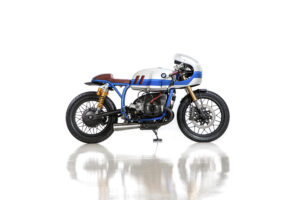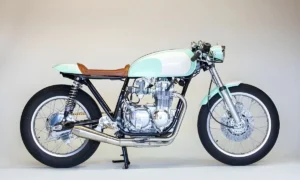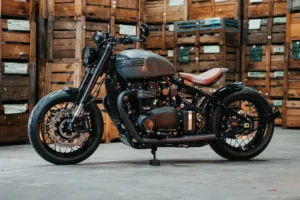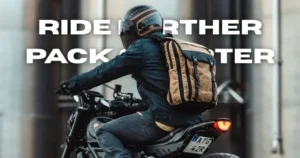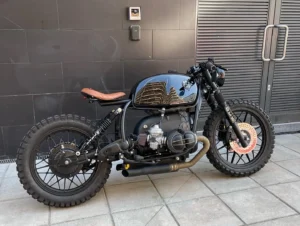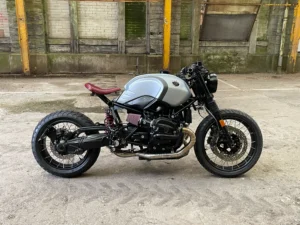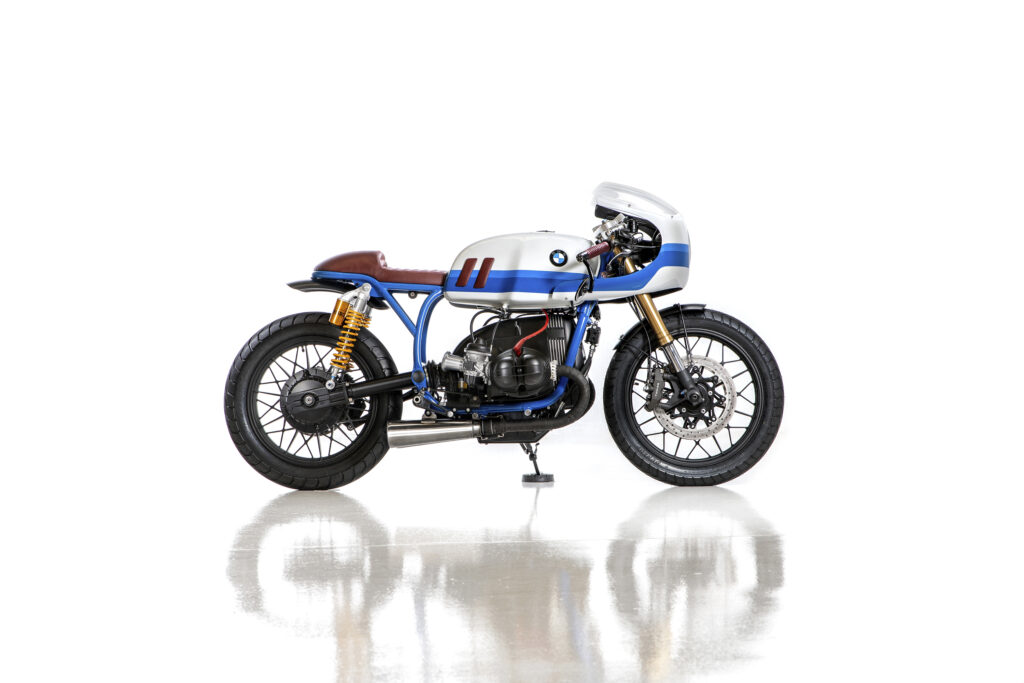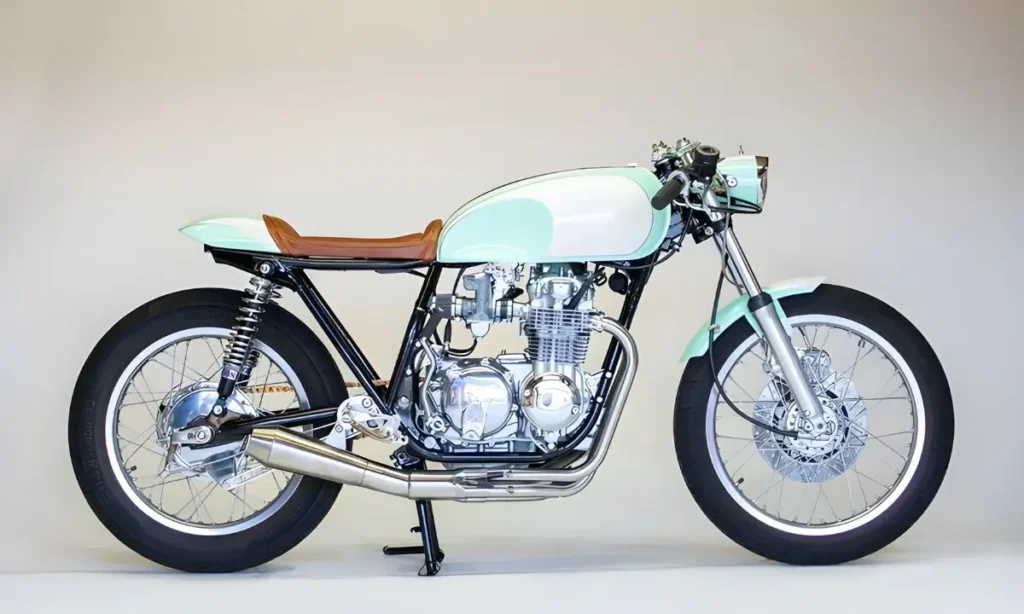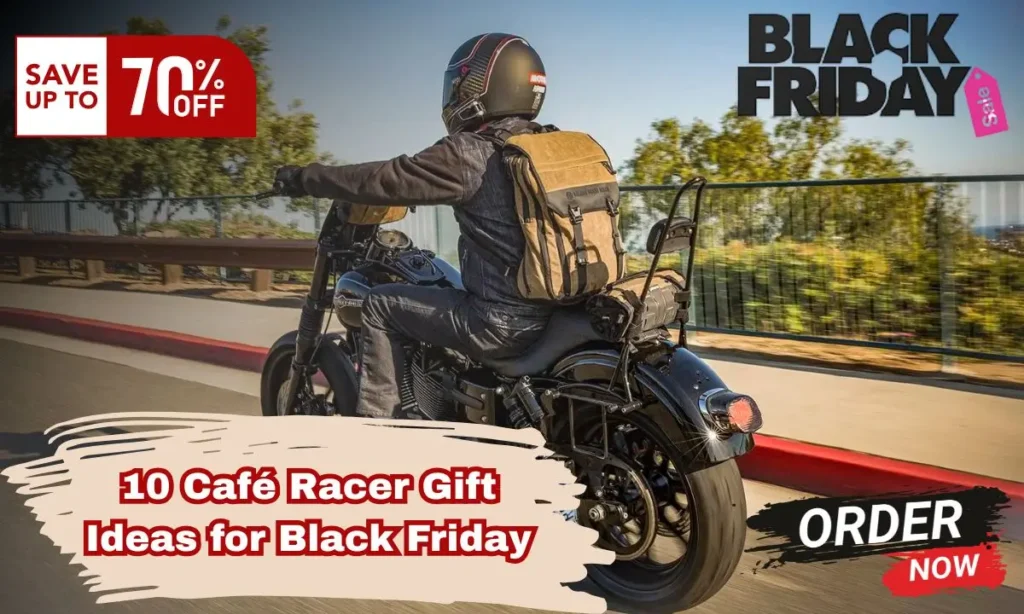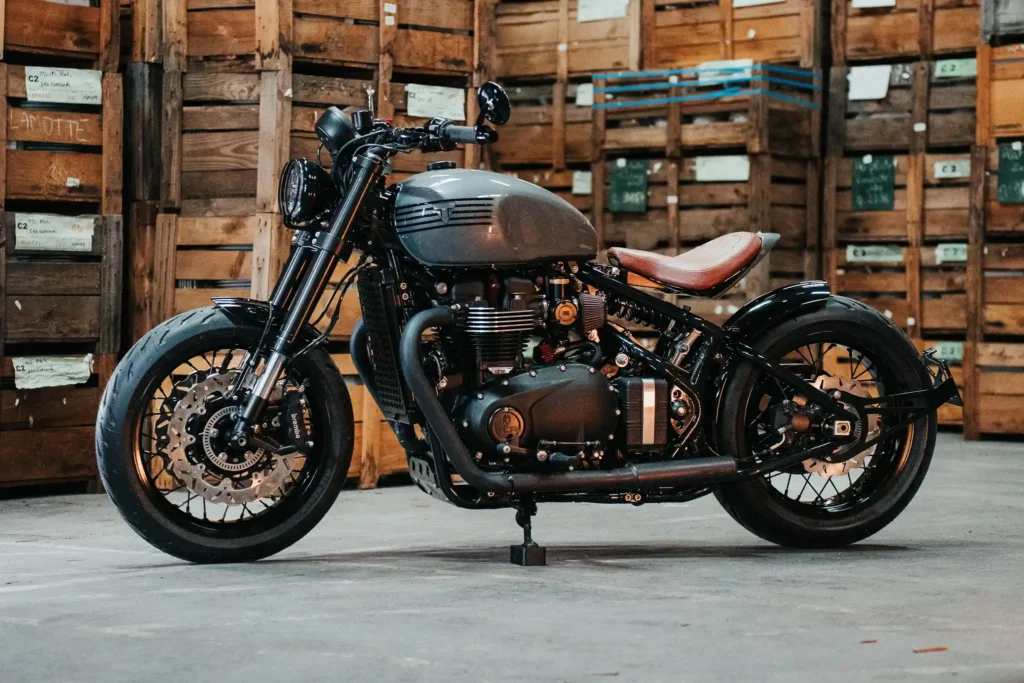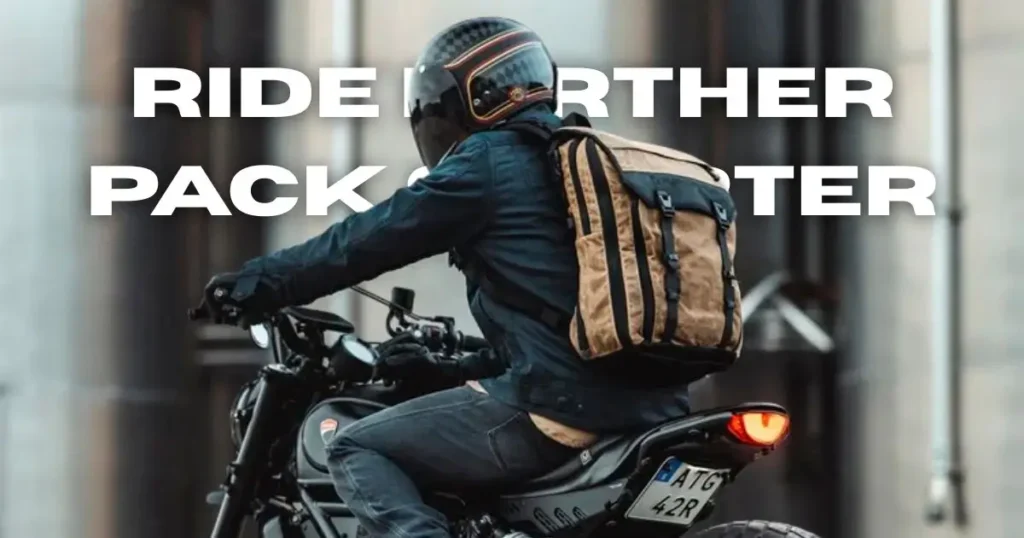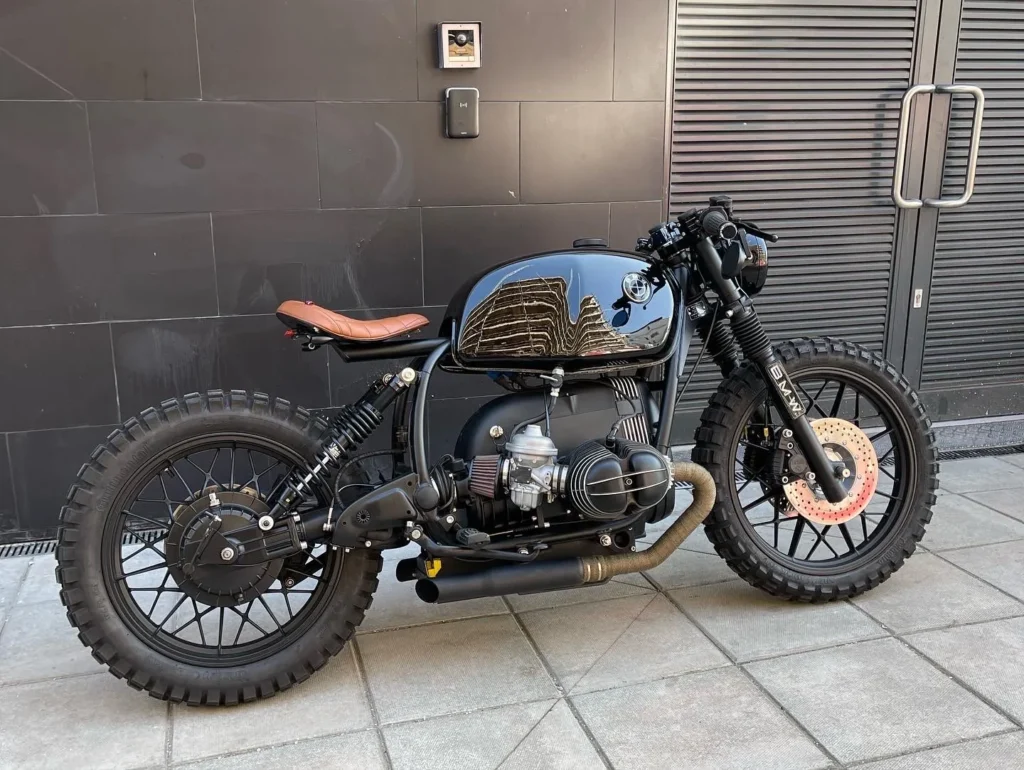Table of Contents
ToggleIf you’re like me, you probably love classic motorcycles. There’s something special about how old designs mix with modern style. They grab attention and make your heart race. This is why the BMW R65 café racer stands out. The BMW R65 is a bike from the late 70s. It may not be as fast as today’s sport bikes, but it has a lot of character. It’s also a great bike to customize.
In this guide, I’ll show you how the BMW R65 can be turned into a café racer. A café racer is a popular type of custom bike. Whether you’re a fan of motorcycles or new to them, the R65 café racer is a great choice.
So, what makes this bike special? And why do so many people choose it for their café racer builds? Let’s take a closer look.
BMW R65 Overview
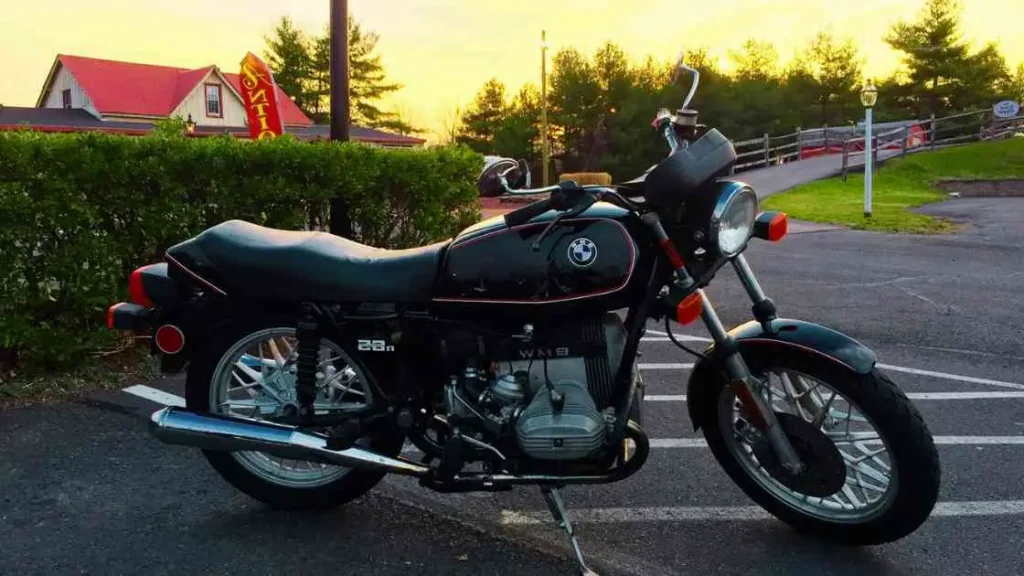
A Brief History of the BMW R65
The BMW R65 came out in 1978. It was part of BMW’s famous R series. It had a smaller engine (650cc) than bigger bikes like the R100. This made it lighter and easier to control. It wasn’t built for speed. Instead, it was for riders who wanted a smooth and reliable ride.
The R65 shows the best of late 70s design. It has a twin-cylinder “boxer engine,” which is famous for both its look and performance. The bike was made for everyday use. Its simple design also makes it easy to customize. That’s why many people today choose the R65 to build their café racer.
Specs of the Original BMW R65: Engine, Frame, Weight, etc.
Before diving into any custom build, it’s important to understand the original specs of the BMW R65. Knowing the bike’s stock configuration helps you make informed decisions about what to upgrade, what to keep, and how much modification is possible.
Here’s a breakdown of the original BMW R65 specs:
1. Engine
- Type: Air-cooled, four-stroke, 2-cylinder boxer engine
- Displacement: 650cc
- Power Output: Approximately 45 hp at 7,250 rpm
- Torque: Around 54 Nm at 5,500 rpm
- Carburetor: Bing constant depression (CV) carburetors
- Compression Ratio: 9.2:1
- Top Speed: Around 105 mph (170 km/h)
The engine’s design, with its opposed cylinders, is iconic in the BMW lineup, giving it a distinctive look and a lower center of gravity. Though not the most powerful engine by today’s standards, it’s reliable and offers plenty of potential for customization.
2. Frame
- Frame Type: Double-cradle steel tubular frame
- Wheelbase: 55.5 inches (1,410 mm)
- Rake: 27.5 degrees
- Trail: 4.6 inches (117 mm)
The BMW R65’s frame is sturdy and well-suited to café racer modifications. The double-cradle design allows for easy customization, whether you’re looking to modify the subframe or make significant changes to the bike’s geometry.
3. Suspension
- Front: 36mm telescopic forks
- Rear: Dual adjustable shock absorbers
- Wheel Travel (Front): 7.48 inches (190 mm)
- Wheel Travel (Rear): 4.72 inches (120 mm)
Though the stock suspension was comfortable for everyday riding, it’s one of the first components café racer builders tend to upgrade. Lowering the front forks and upgrading the rear shocks are common to give the bike a more aggressive stance and improved handling.
4. Brakes
- Front Brakes: Single disc brake (260 mm) with ATE calipers
- Rear Brakes: Drum brake (200 mm)
Most café racer builds will upgrade to dual disc brakes or larger rotors, especially if increasing the bike’s power or altering the handling.
5. Weight and Dimensions
- Dry Weight: Approximately 450 lbs (205 kg)
- Fuel Capacity: 4.5 gallons (17 liters)
With a weight of about 450 lbs, the R65 is relatively light for its class, making it easier to handle. However, many builders aim to shave off even more weight by replacing heavier components with lightweight alternatives (aluminum, carbon fiber, etc.).
6. Wheels and Tires
- Front Tire: 3.25 x 19 inches
- Rear Tire: 4.00 x 18 inches
- Wheels: Spoked wheels were standard, though some models had cast wheels
Builders often swap the stock tires for wider ones or install modern tires with better grip to improve both the look and performance of their café racers.
Why is the BMW R65 Perfect for Café Racer Builds?
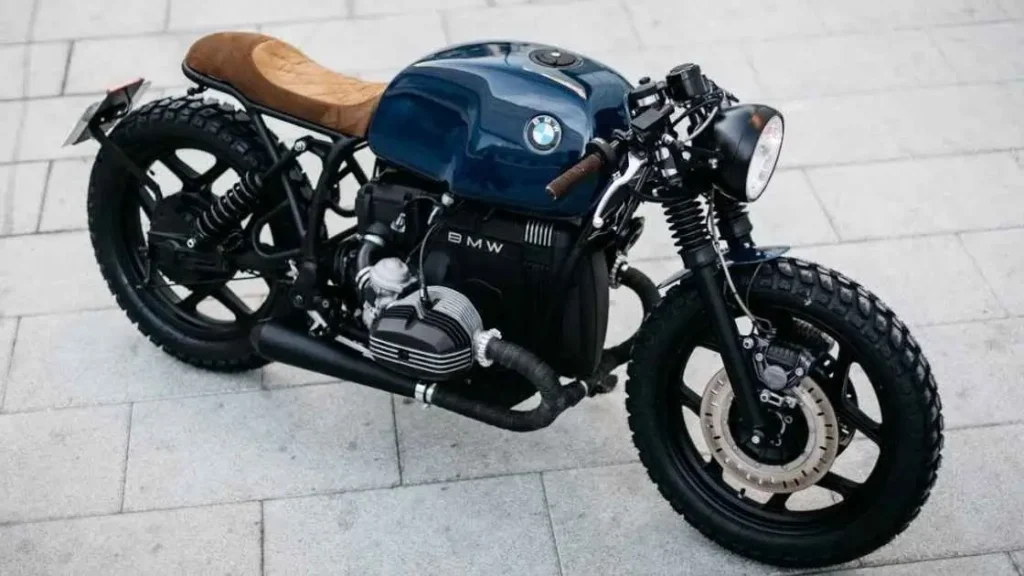
The café racer style is all about stripping motorcycles down to the basics: light, fast, and built for speed. The BMW R65 is a great choice for this.
First, its engine, a flat twin and air-cooled boxer, is strong and easy to work on. You don’t need to be a pro mechanic to start making changes. Plus, the bike is small and light, perfect for the clean and simple café racer look.
Many riders love the R65 because it mixes classic style with modern function. You get the vintage feel without losing too much performance, especially if you add modern parts like better suspension or upgraded brakes.
Café Racer Build Essentials
So, you’ve got a BMW R65 or are thinking about getting one. The next step is figuring out how to turn this classic bike into a sleek café racer. Don’t worry, it’s easier than it sounds. A café racer build is about removing extra parts and making changes that look great and improve performance.
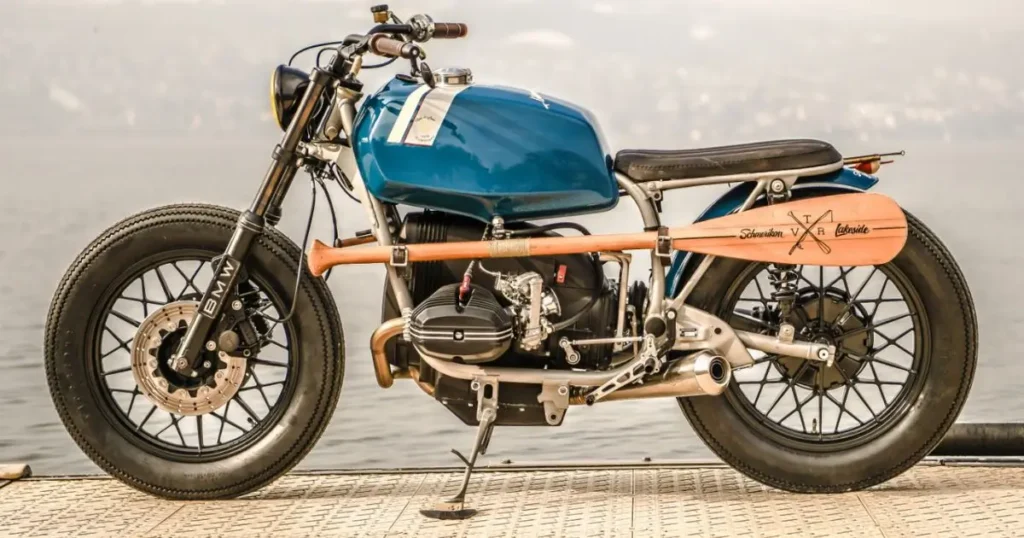
The good news is that the BMW R65 is already a solid base. With a few key upgrades and some style changes, you can create something truly unique. Let’s go over the basic elements for your café racer build.
Aesthetic Changes
When people think of a café racer, they picture a simple, classic look. Café racers are all about clean lines, vintage style, and an aggressive stance. Luckily, the R65’s frame and design are perfect for this.
Subframe Modifications
One of the most common changes for a café racer build is the subframe. On the R65, the stock subframe is strong but doesn’t have the sleek look most builders want. Many customizers cut down or replace the subframe to get that low seat style typical of café racers.
This is not as hard as it sounds. There are subframe kits made just for BMW R65s that make the job easier. For example, Rogue Motorcycles offers a full subframe kit with all the parts needed to give your bike that café racer look.
Custom Fuel Tank
Another key feature of café racer design is the fuel tank. Café racers usually have a smaller, more sculpted tank compared to the bulky stock R65 tank. Some builders choose to replace the R65 tank with something like an R100 tank, which has a sleeker design.
If you want a fully custom look, you can have a fuel tank made just for you. Builders like Ed Turner or Gasoline Workshop create custom tanks to match the café racer style.
Seats and Tail Sections
The seat is where you’ll spend a lot of time, both in terms of design and comfort. A typical café racer seat is narrow, often solo, and usually made with leather or a similar material. You’ll want to opt for a saddle-style seat that hugs the subframe tightly. It’s not only a key part of the aesthetic but also helps to reduce the overall weight of the bike.
To complete the look, you’ll need to think about the tail section. Some builders go with a minimalistic cowl at the back of the seat, while others integrate LED lights or small winglets for added flair.
Performance Upgrades
While the café racer look is critical, performance upgrades are just as important—if not more so. After all, these bikes aren’t just meant to look good parked at a café—they’re built to ride fast and handle well.
Suspension Modifications
The stock R65 suspension is decent for everyday riding, but if you’re going for the café racer feel, you’ll likely want to lower the front end and upgrade the rear shocks. Many builders lower the front forks by 30-40mm to give the bike a more aggressive stance. It’s a simple yet effective way to change the entire posture of the motorcycle.
As for the rear, investing in a set of high-quality aftermarket shocks, such as those from YSS or Öhlins, can significantly improve the handling of your café racer. These shocks will provide better responsiveness and adjustability, making the bike more nimble on twisty roads.
Engine Upgrades
The R65’s 650cc engine is no slouch, but if you want to add a bit more punch, there are plenty of options available. One popular upgrade is increasing the engine displacement by using components from an R80 or R100, which can bump the engine up to 800cc or even 1000cc. This involves some work on the engine internals, such as replacing the pistons and cylinders, but the result is a significant boost in power.
Other common engine mods include upgrading the carburetors. Many builders swap the stock Bing carbs for Mikuni or Dellorto units, which offer better performance and easier tuning. Pairing these carbs with a set of velocity stacks or pod filters can also improve throttle response and give the bike a more aggressive sound.
Exhaust Systems
Let’s talk about one of the most noticeable upgrades: the exhaust. Not only does a custom exhaust give your bike that raw, aggressive sound, but it also helps with performance by reducing back pressure. Many café racer builds feature 2-into-1 or 2-into-2 exhaust systems, often with smaller mufflers to keep the lines of the bike clean.
Functional Elements
While aesthetics and performance are crucial, don’t overlook the functional upgrades that can make your café racer a better bike to ride.
LED Lighting and Electrical Upgrades
The stock lighting on an R65 is, to put it nicely, functional but we can do better. One of the most common upgrades is replacing the stock headlight with a smaller, brighter LED unit. Many builders also swap out the bulky stock indicators for more subtle, integrated LED lights.
If you’re planning a full rebuild, it’s also worth considering upgrading the wiring harness. Motogadget offers wiring kits that simplify the process of integrating modern electronics, such as digital dashboards and keyless ignition systems.
Clip-On Handlebars
One of the easiest and most effective ways to achieve the café racer riding position is by adding clip-on handlebars. The clip-ons will lower your riding posture, giving you that signature hunched-over look while also improving aerodynamics. Brands like TRW and Tomaselli offer clip-ons that fit directly onto the R65’s fork tubes.
Real-Life BMW R65 Café Racer Builds and Custom Case Studies
One of the best ways to get ideas for your BMW R65 café racer project is by looking at what others have done. There are some amazing builds out there that show just how great this bike can be. I’ve picked a few that stand out and really show what a café racer should be: fast, simple, and full of style.
Build 1: Gasoline Workshop’s BMW R65 for Cam Elkins
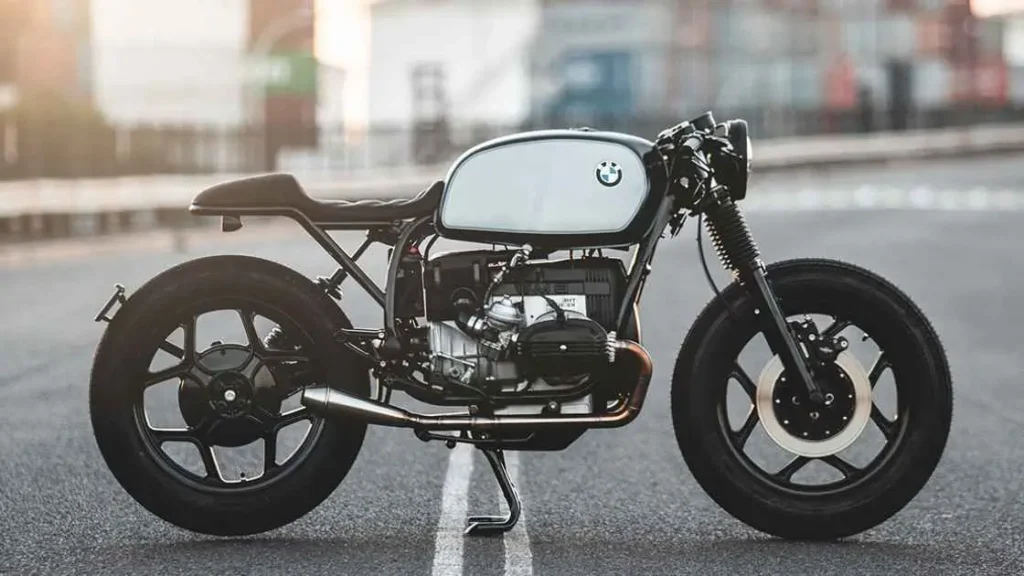
One of my favorite builds is the BMW R65 café racer made by the team at Gasoline Workshop for filmmaker Cam Elkins. You might know Cam as the creator of Stories of Bike, a film series about motorcycles and their riders. When Cam wanted a custom bike, he asked Gasoline Workshop to bring his idea to life.
They started with a 1986 BMW R65. First, they took apart the engine and drivetrain. They replaced seals and bearings to make sure everything worked well before they focused on how the bike looked. One cool feature of this build is its bold stance. The front was lowered by 40mm, and the rear was raised by 50mm with custom shocks. This gave the bike a forward-leaning look, which is great for a café racer.
Other changes include a two-into-two exhaust system, a classic black headlight, and mirrors mounted on the bars. The paint job is simple but classy, with a mix of gray and deep blue. It makes the bike look timeless, without being too flashy.
This build shows that details matter when turning the R65 into a café racer. Every part, from the custom seat to the small changes in the controls, helps to create a stylish and well-designed bike.
Build 2: CRO Motorcycles’ Valkyrie BMW R65
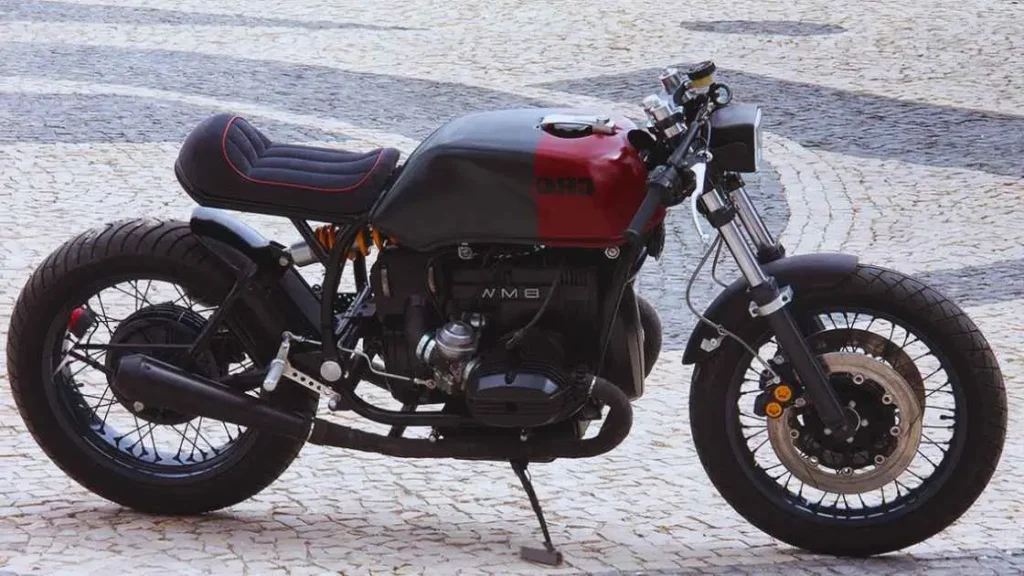
Now, let’s talk about CRO Motorcycles’ Valkyrie BMW R65. Most café racers focus on looks, but this one offers both style and comfort. CRO Motorcycles started with a 1981 BMW R65 and made big changes to how it looks and works.
What makes this bike special is how it stays comfortable without losing the café racer feel. For example, they changed the rear shocks to make the ride smoother. They also moved the handlebars so the rider can sit in a better, more comfortable way.
The bike looks great too. It has a shiny fuel tank and a simple rear design, keeping the lines clean. The team chose tough Continental TKC80 tires, which are stronger than what you usually see on café racers. These tires give the Valkyrie a rougher, scrambler-like style.
If you want a café racer you can ride longer than just quick city trips, this build shows you can have both comfort and style.
Build 3: Rogue Motorcycles’ BMW R65
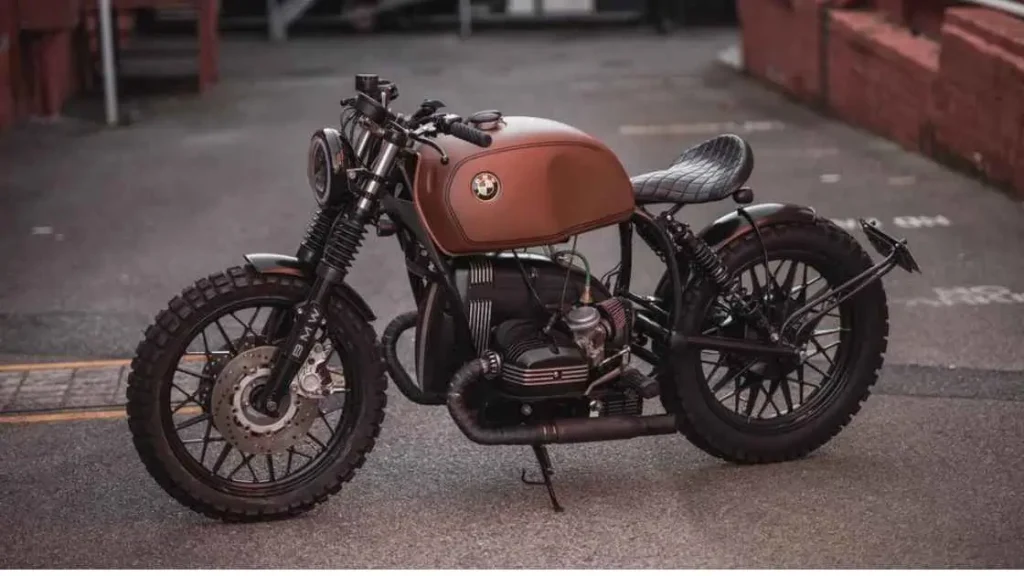
Rogue Motorcycles, from Australia, are famous for their bold and custom bikes. Their BMW R65 café racer is no different. They started with a standard BMW R65 and stripped it down to the basics. Rogue didn’t just focus on looks—they made sure it performs well too.
One key feature of this build is the custom subframe. Rogue made their own subframe, which has become popular with other builders who want that low, sleek look. The suspension was also changed a lot. They lowered the front forks and added YSS rear shocks that can be fully adjusted to improve how the bike handles.
The design of this bike is simple, but it still grabs attention. The matte brown R100 fuel tank, along with the matching solo seat, gives it a cool, vintage feel. The team added modern Motogadget parts like a keyless start and a digital speedometer, mixing new technology with the old-school style.
This build shows how flexible the BMW R65 can be. Whether you want a simple café racer or one with more comfort and modern tech, the R65 is a great base to start from.
These examples show what’s possible with a BMW R65 café racer. Each bike has its own style, but all share the same café racer spirit—focused on performance, stripped down, and beautifully built. Next, we’ll go over the key parts and changes you can use to create your own custom build.
Key Parts for BMW R65 Café Racer Builds
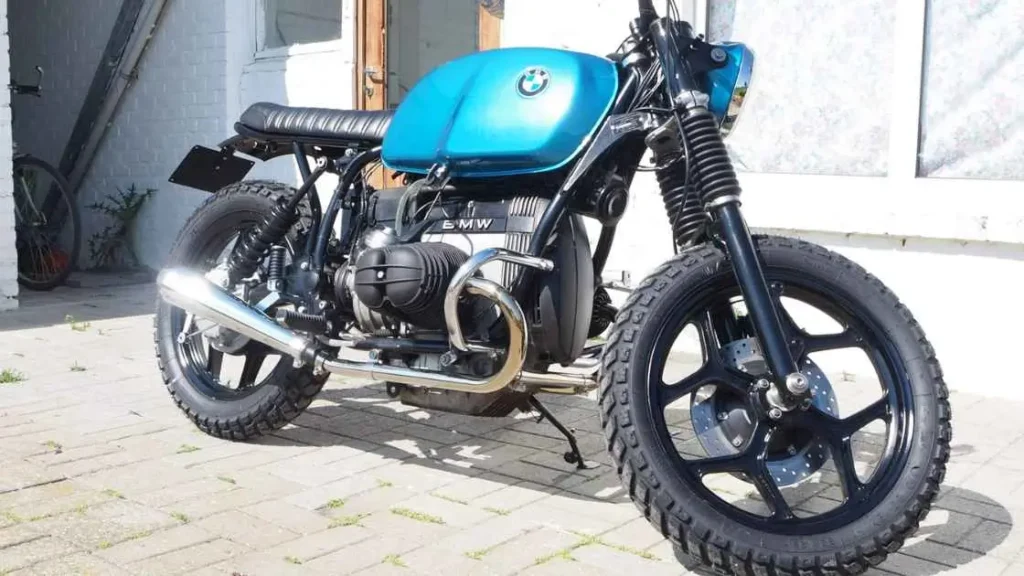
You have a vision for your BMW R65 café racer, and now you’re ready to find the key parts. Whether you’re building it yourself or getting help from a pro, it’s important to know which parts matter most and where to get them. In this section, we’ll go over the key parts you need and share tips on where to find high-quality parts for your build.
Aftermarket Parts
1. Suspension Components
As we touched on earlier, upgrading the suspension is one of the most important performance improvements you can make on your BMW R65 café racer. The stock suspension is decent for a vintage bike, but if you’re aiming for a café racer with improved handling and a lower stance, you’ll want to invest in aftermarket options.
- Front Forks: Many builders opt to lower the front forks by around 30-40mm. You can achieve this by either modifying the existing forks or upgrading to aftermarket parts. One popular choice is the Showa forks from a Kawasaki ZX-10R, which offer better handling and a sportier look.
- Rear Shocks: Upgrading the rear shocks will not only improve comfort but also make the bike handle much better, especially in tight corners. Brands like YSS and Öhlins provide fully adjustable rear shocks that are ideal for café racer builds.
2. Exhaust Systems
The exhaust system is another crucial part of your café racer build. A custom exhaust doesn’t just give your bike that raw, throaty sound we all love; it also improves performance by reducing back pressure and helping the engine breathe more efficiently.
- 2-into-1 vs. 2-into-2: Some builders prefer the classic 2-into-2 exhaust system for symmetry, while others go for a 2-into-1 setup for a cleaner look and slightly better performance. Companies like JvB Moto and Unit Garage offer high-quality custom exhausts specifically designed for BMW R65 models.
- Custom Exhaust Fabrication: If you’re going for a completely unique look, you can always have a custom exhaust fabricated to your specifications. In some builds, like the one by Gas&Retro, the exhaust becomes a key visual feature of the bike.
3. Clip-On Handlebars
The handlebar setup is a defining characteristic of café racers. Clip-ons are essential if you’re aiming for that classic, low-slung riding posture that puts you in a more aerodynamic position.
- Popular Brands: TRW and Tomaselli are well-known for their high-quality clip-on handlebars, which are designed to fit directly onto the R65’s fork tubes. These bars provide a more aggressive riding position, perfect for that café racer feel.
4. Custom Seats
The café racer seat is another major area of focus. You want something minimalist, comfortable, and stylish. Typically, café racers feature a solo seat, often with a custom leather cover and a small rear cowl.
- Sourcing Custom Seats: Companies like Biltwell and Saddlemen make excellent aftermarket seats designed specifically for café racers. Alternatively, you can have a seat custom-made to match your subframe and aesthetic.
- DIY Seat Options: If you’re feeling ambitious, many builders choose to fabricate their own seat pans, which can then be covered in leather or another durable material. This gives you full control over the design and comfort of the seat.
5. Fuel Tanks
The fuel tank plays a massive role in defining the overall look of your café racer. The stock R65 tank is functional but can feel a bit bulky. Many builders swap it out for a sleeker tank, like the one from the BMW R100, or they opt for a fully custom tank.
- Aftermarket Options: There are several companies that offer pre-made custom tanks for BMW R-series motorcycles. MotoLanna and Steel Bent Customs both produce tanks that fit the R65 with minimal modification.
- Custom Fabrication: For a truly unique look, you can have a tank fabricated from scratch. This allows you to choose the exact shape and size that fits your build. Some builders even incorporate vintage elements, like Monza-style fuel caps, to enhance the retro vibe.
Custom-Made Parts
For those of you looking to go the extra mile, custom-made parts can elevate your BMW R65 café racer to a whole new level. While aftermarket parts can get the job done, custom fabrication ensures your bike stands out from the crowd.
1. Subframe Kits
One of the most common customizations is the subframe. Many café racer builders remove the stock subframe entirely and replace it with a custom-made unit that better fits the low, sleek look.
- Rogue Motorcycles Subframe Kit: Rogue Motorcycles offers a subframe kit specifically for BMW R65 builds. This kit gives you everything you need to achieve that signature café racer rear end, with a clean, tucked-in seat.
2. Custom Wiring Harnesses
If you’re planning to upgrade the electronics on your R65 (such as installing LED lights, a digital speedometer, or a keyless ignition), it’s worth considering a custom wiring harness. Brands like Motogadget offer complete wiring systems that make integrating modern technology much easier.
Sourcing Tips
Finding the right parts for your café racer build can be tricky, especially if you’re looking for specific components that aren’t mass-produced. Here are a few tips to help you source the best parts:
- Online Marketplaces: Websites like eBay and Craigslist can be great for finding both new and used parts for your BMW R65. Just make sure to verify the seller’s reputation before making a purchase.
- Specialized Retailers: Companies like Revival Cycles and Bike Exif’s online shop specialize in custom and aftermarket motorcycle parts. These retailers often carry hard-to-find parts and accessories specifically for café racer builds.
- Custom Fabricators: If you’re struggling to find the perfect part, many custom fabricators can create bespoke pieces for your build. Just be prepared for longer lead times and higher costs.
By focusing on these key parts and understanding where to source them, you’ll have everything you need to transform your BMW R65 into a stunning café racer. Whether you go with off-the-shelf components or decide to have parts custom-made, this is where your vision starts to take shape.
Common BMW R65 Café Racer Build Challenges and How to Solve Them
Building a café racer is not easy, especially with an old bike like the BMW R65. While the R65 is great for custom work, some challenges may come up during the build. Don’t worry, I’ll show you the common problems and give you simple tips to keep your project on track.
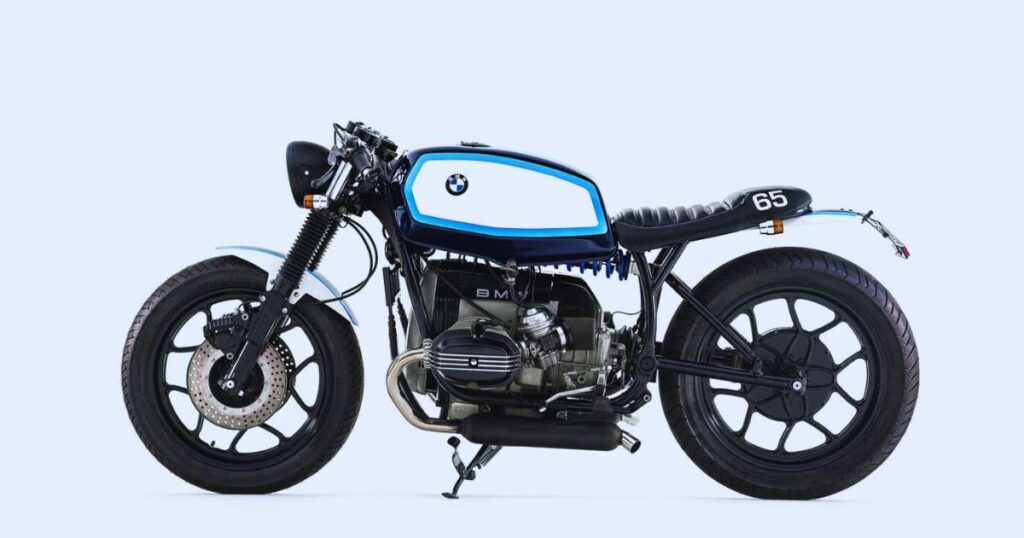
Mechanical Issues
1. Weight and Bulk of the Boxer Engine
One thing people love about the BMW R65 is its famous boxer engine. But the size and weight of this engine can make it hard to create a light and quick café racer. The engine’s cylinders stick out on both sides, which can change how the bike looks and handles.
Solution: Focus on reducing weight in other areas. Replace heavy stock parts with lighter alternatives, like aluminum or carbon fiber. Upgrading to a custom exhaust, swapping out the bulky stock subframe, and trimming unnecessary bodywork can make a significant difference in the bike’s overall weight. Additionally, using lightweight wheels, like spoked rims, will help improve handling without altering the core characteristics of the boxer engine.
2. Engine Tuning and Upgrades
Another issue with the R65’s engine is its relatively modest power output. While 650cc is plenty for most riders, café racers are typically known for their speed and performance. If you want your bike to keep up with the faster café racers, engine tuning or upgrades might be necessary.
Solution: There are a couple of ways to boost performance. One popular option is increasing the engine’s displacement by swapping in components from an R80 or R100 model. This upgrade can give you an 800cc or 1000cc engine, providing more power without compromising reliability. You can also opt for carburetor upgrades, such as switching to Mikuni or Dellorto carbs, which offer better throttle response and performance.
3. Frame Modifications
One of the trickier aspects of customizing a BMW R65 into a café racer is modifying the frame. The stock R65 frame is functional but not optimized for the sleek, low-profile look of a café racer. Cutting or altering the frame can be intimidating for first-time builders, and it’s easy to make a mistake that compromises the bike’s structural integrity.
Solution: If you’re not confident in your ability to modify the frame yourself, it’s worth consulting a professional fabricator. Many custom shops offer pre-made subframes that are designed to bolt directly onto the R65 without compromising safety. Rogue Motorcycles, for instance, has a bolt-on subframe kit specifically designed for BMW R65 café racer builds. If you’re doing it yourself, make sure to research frame modification best practices, and don’t rush the process.
Aesthetic Challenges
1. Achieving the Right Balance Between Retro and Modern
One of the biggest challenges in any café racer build is striking the right balance between retro aesthetics and modern performance. You want your bike to have that classic 60s or 70s café racer look, but you also want it to be comfortable and functional for today’s riding standards.
Solution: Choose your upgrades wisely. You don’t need to modernize everything—focus on areas that will enhance performance without detracting from the vintage aesthetic. For instance, using LED lights and digital instruments can improve functionality while still fitting in with the bike’s overall design. A mix of old-school parts, like spoked wheels and vintage seats, paired with modern tech like keyless ignition or a Motogadget digital dash, is a great way to strike that balance.
2. Custom Paint and Finishes
Another common challenge is deciding on the bike’s final look. Café racers are known for their minimalistic, stylish designs, but it can be difficult to settle on a color scheme or finish that complements the R65’s unique shape and proportions.
Solution: Keep it simple. Many builders opt for muted or monochromatic color schemes to let the bike’s design speak for itself. Popular choices include matte black, dark metallics, or classic BMW colors like silver or blue. If you want to make a bold statement, consider adding accent colors in small, subtle areas—such as the wheels or fuel tank.
Functional Challenges
1. Handling and Performance
Even with the right modifications, getting the handling just right on a café racer can be tough. The stock BMW R65 is built more for comfort than speed, so achieving the agile, responsive feel of a true café racer can take some effort.
Solution: Upgrading the suspension is the key to improving handling. Lowering the front forks and upgrading to fully adjustable rear shocks will drastically change the way your bike rides. Adjusting tire size and switching to lighter wheels can also help with agility. Another option is experimenting with different riding positions by adjusting the handlebar height or seat angle to find a setup that feels more responsive on the road.
2. Electrical System Upgrades
The electrical system on the BMW R65 can be a headache, especially if you’re upgrading to modern electronics like LED lights or digital instruments. The stock wiring harness might not be equipped to handle the increased electrical load, leading to issues like blown fuses or unreliable electronics.
Solution: Consider rewiring the bike with an updated wiring harness designed for modern electronics. Motogadget offers full wiring kits that are compatible with BMW R65 models and can simplify the process of integrating new components. Alternatively, if you’re doing it yourself, invest in high-quality relays, fuses, and connectors to ensure your electrical system is reliable and safe.
How Much Does It Cost to Build a BMW R65 Café Racer?
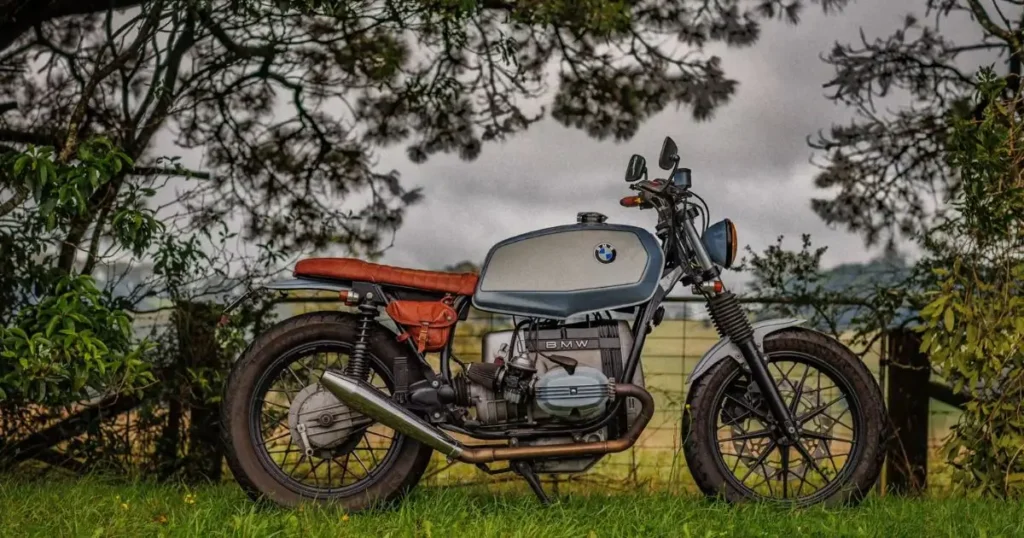
Building a custom café racer can be an exciting yet challenging project—not only in terms of design and mechanics but also in terms of budgeting. The costs can vary widely depending on how far you want to take your modifications, whether you’re doing the work yourself or hiring a professional. In this section, I’ll break down the typical costs associated with a BMW R65 café racer build and help you prioritize your spending based on what’s most important to your project.
1. The Base Bike: BMW R65 Purchase
The first expense is, of course, purchasing the base bike. The BMW R65 is relatively affordable compared to other vintage models, which makes it a popular choice for custom builds. The price can vary depending on the condition and model year, but here’s what you can expect:
- Price Range: $2,500 – $5,000
- Running and ready-to-ride: A well-maintained R65 in good condition can run you closer to $5,000, while rougher project bikes can be found for as little as $2,500.
- Non-running project bikes: If you’re up for some engine or electrical work, you can score a bargain on a non-running R65 for even less, though this will require more effort and additional repair costs down the line.
2. Parts and Upgrades
Once you have the base bike, the bulk of your expenses will come from purchasing the parts needed to transform your R65 into a café racer. Here’s a breakdown of key parts and their average costs:
a. Suspension Upgrades
- Front Fork Mods/Lowering Kit: $150 – $300
- Rear Shocks (YSS or Öhlins): $500 – $1,000
If you’re going for a full suspension overhaul, this could easily be one of your more significant expenses. Lowering the front forks is relatively affordable, but investing in high-quality rear shocks will drastically improve the handling and comfort of your bike.
b. Exhaust System
- Custom Exhaust (2-into-1 or 2-into-2): $500 – $1,200
A custom exhaust system doesn’t just improve performance—it also gives your bike that unmistakable café racer sound. You can either go for an off-the-shelf option, or you can have one custom-fabricated for your specific build. Keep in mind, fabrication may push the cost toward the higher end of this range.
c. Clip-On Handlebars
- TRW or Tomaselli Clip-ons: $100 – $200
Clip-on handlebars are one of the most cost-effective changes you can make. For around $100 to $200, you can achieve the iconic café racer look and feel. It’s a relatively inexpensive modification but makes a big difference in terms of both aesthetics and rider position.
d. Custom Seat and Subframe
- Custom Seat: $200 – $600
- Subframe Kit: $300 – $600
The seat and subframe are key visual elements of your café racer. You can find custom seats and pre-made subframe kits that fit the R65, or you can have them fabricated for a completely unique look. Costs vary depending on the materials and whether you go with a professional build or DIY.
e. Fuel Tank
- Aftermarket or Custom Tank: $400 – $1,000
Swapping out the stock fuel tank for a sleeker, more aggressive design is another popular modification. You can find aftermarket tanks specifically for BMW models, or you can have one custom-made to your specifications. Fabrication can increase the cost, but it also ensures you get the exact look you want.
f. Wiring and Electrical Upgrades
- Motogadget Wiring Kit: $300 – $600
- LED Lights and Indicators: $100 – $300
If you’re adding modern components like LED lights, digital instruments, or keyless ignition, it’s a good idea to invest in a wiring harness designed to handle the increased electrical load. Companies like Motogadget offer kits that simplify the wiring process and make your build more reliable.
3. Paint and Finishing
- Custom Paint Job: $500 – $2,000
The paint job is one of the final touches that really brings your café racer to life. Whether you go for a classic matte black or something more eye-catching like metallic blue or grey, expect to spend anywhere from $500 for a simple job to $2,000 for a fully custom design with intricate detailing.
4. Labor Costs (If Outsourced)
If you don’t plan on doing the work yourself, labor costs can add up quickly. Custom motorcycle builders typically charge by the hour, and rates can vary depending on their experience and reputation.
- Labor (professional shop): $75 – $150 per hour
- Total labor costs: $2,000 – $5,000 (for a full custom build)
Keep in mind that labor can often be the most significant expense if you’re outsourcing the build, especially for more complicated tasks like frame modification, engine rebuilding, or electrical work.
5. Total Estimated Cost
Here’s a rough breakdown of what you can expect to spend on your BMW R65 café racer build:
- Budget Build: $4,000 – $8,000
- This assumes a DIY approach with used parts, minimal professional labor, and basic upgrades.
- Mid-Range Build: $8,000 – $15,000
- This range allows for higher-quality parts, some professional work, and custom touches.
- Premium Build: $15,000 – $25,000+
- A premium build includes top-of-the-line parts, a fully custom paint job, and significant labor from a professional builder.
Budgeting for a café racer build can be tricky, but the beauty of working with a BMW R65 is that you have plenty of options depending on your budget. Whether you’re going for a minimalist, affordable build or a fully customized showpiece, there are ways to make your dream café racer a reality.
How to Start Your Own BMW R65 Café Racer Build?
Now that we’ve covered the essential parts, common challenges, and costs associated with building a BMW R65 café racer, let’s talk about how to actually get started. Whether you’re taking the DIY approach or partnering with a professional builder, this step-by-step guide will walk you through the process from start to finish.
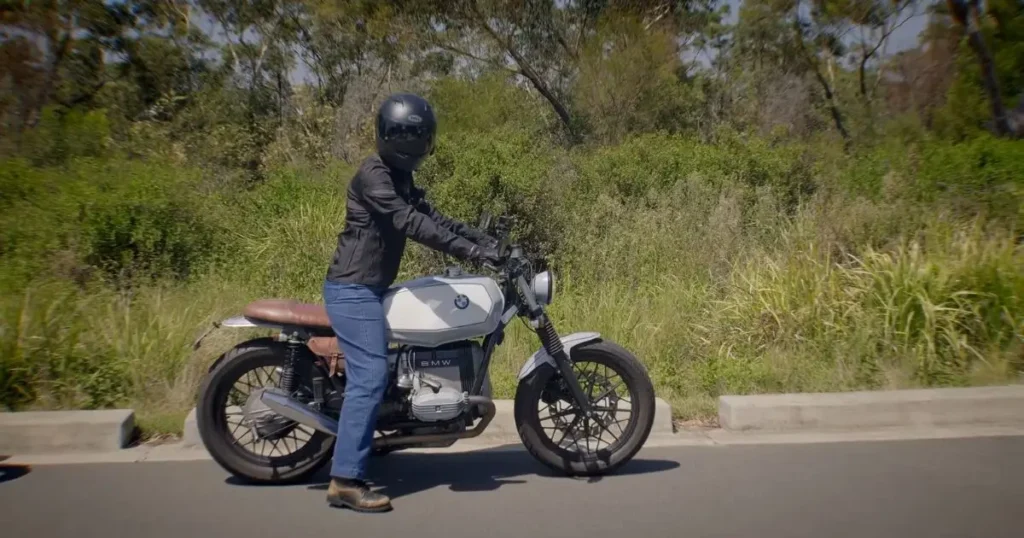
Step 1: Find the Right BMW R65
The first and most crucial step is finding the right base bike. As mentioned earlier, the BMW R65 is a popular choice for café racer builds because of its reliability, lightweight frame, and iconic boxer engine. When hunting for your R65, there are a few key things to look for:
- Condition of the Engine and Frame: You want to start with a bike that’s mechanically sound if possible. Check for rust, frame damage, or leaks in the engine. It’s okay if the bike isn’t in perfect condition, but be mindful that a non-running bike may require more money and time to get back on the road.
- Price Range: You can often find BMW R65 models for sale in the $2,500 to $5,000 range, depending on the year and condition. If you’re buying a project bike, be sure to factor in the costs of repairs and upgrades.
Step 2: Plan Your Build
Before you start tearing the bike apart, it’s important to plan out your build. This will save you time, money, and a lot of headaches down the line. Here’s what to consider:
- Set a Budget: Based on the cost breakdown we discussed earlier, determine how much you’re willing to spend on the build. Remember to allocate funds for unforeseen expenses—things always come up!
- Decide on Aesthetic and Performance Goals: Are you aiming for a classic café racer look, or do you want something more modern and aggressive? Think about what kind of riding you’ll be doing—if it’s mostly short trips, you can prioritize aesthetics. But if you plan to ride long distances, consider comfort and reliability.
Step 3: Gather Your Tools
If you’re doing the build yourself, you’ll need a decent set of tools. The essentials for a café racer build include:
- Socket and wrench set
- Screwdrivers (flathead and Phillips)
- Torque wrench
- Grinder and cutting tools (for frame modifications)
- Multimeter (for electrical work)
- Welder (if you’re modifying the frame or making custom parts)
If you don’t already own these tools, it’s worth investing in good-quality ones, as they will make your work much easier. You can also rent tools if you’re working on a budget.
Step 4: Disassembly
Once you have your base bike and a plan in place, it’s time to start disassembling the R65. This part of the process is fun because you get to strip the bike down to its bare bones. Here’s how to approach it:
- Start with the Non-Essentials: Remove the seat, tank, fenders, and side covers. These parts will likely be replaced or modified anyway, so it’s best to get them out of the way early.
- Remove the Exhaust System: Since you’ll likely be upgrading or customizing the exhaust, take it off to make room for future work.
- Carefully Document Everything: As you disassemble the bike, take photos and label parts to make the reassembly process easier. Trust me, this will save you a lot of time and confusion later!
Step 5: Frame and Subframe Modifications
One of the defining features of a café racer is the frame. Typically, the stock BMW R65 frame needs to be modified to create the sleek, low-slung look that café racers are known for. If you’re comfortable with welding, you can modify the frame yourself, but many builders opt for pre-made subframe kits that bolt directly onto the bike.
- Cut and Remove Unnecessary Tabs: You’ll want to cut off any extra brackets or tabs that won’t be used in your build. This helps to clean up the overall look of the bike and reduces weight.
- Install a Custom Subframe: Once the frame is cleaned up, you can install a custom subframe designed for a café racer build. Many builders go for a bolt-on subframe kit like those offered by Rogue Motorcycles.
Step 6: Engine Upgrades and Tuning
If you’re planning on upgrading the engine, now is the time to do it. This might involve increasing the displacement by using parts from an R80 or R100 model, or simply tuning the carburetors for better performance. Other upgrades to consider at this stage include:
- Carburetor Swap: Many café racer builders opt for Mikuni or Dellorto carburetors, which offer better throttle response and performance compared to the stock Bing carbs.
- Exhaust Installation: Once the engine upgrades are done, it’s time to install your custom exhaust. Whether you go with a 2-into-1 or 2-into-2 system, make sure the exhaust fits well with your overall design.
Step 7: Suspension and Wheels
Improving the handling of your BMW R65 is crucial to achieving the café racer feel. At this point in the build, focus on upgrading the suspension and wheels:
- Lower the Front Forks: Many builders lower the front forks by 30-40mm to give the bike a more aggressive stance.
- Install New Rear Shocks: Fully adjustable rear shocks from brands like YSS or Öhlins can drastically improve the handling and comfort of your ride.
- Upgrade the Wheels: Consider upgrading to lightweight spoked wheels to improve both aesthetics and performance.
Step 8: Electrical Work and Wiring
If you’re adding modern components like LED lights, a digital speedometer, or keyless ignition, it’s time to focus on the electrical system. Upgrading the wiring harness is often necessary to accommodate these new components.
- Install a Custom Wiring Kit: Motogadget offers complete wiring kits designed for modern café racer builds. These kits make it easier to wire everything correctly, especially if you’re adding new electronics.
- LED Lighting: Swap out the stock lights for a more modern, minimalist LED setup. This not only improves visibility but also enhances the bike’s sleek appearance.
Step 9: Paint and Finishing Touches
Now for the fun part—making your bike look incredible. Once all the mechanical work is done, it’s time to focus on the aesthetics. A custom paint job is the best way to tie the whole build together.
- Choose Your Colors: Whether you go for a classic matte black or something more eye-catching like metallic blue, the paint job will play a huge role in defining the final look of your café racer.
- Finishing Details: Don’t forget to add the final touches, like new grips, bar-end mirrors, or a custom fuel cap. These small details can make a big difference in the overall appearance of the bike.
Building your own BMW R65 café racer is an exciting and rewarding project. With the right planning, parts, and a little bit of elbow grease, you’ll have a one-of-a-kind custom motorcycle that reflects your style and personality. Take your time, enjoy the process, and don’t be afraid to ask for help if needed.
For detailed instructions, visit our guide on how to build a BMW R65 café racer.
Conclusion
Building a BMW R65 café racer is more than just a project; it’s a passion. Whether you love the simple, raw look of café racers or enjoy customizing a vintage bike, the R65 is perfect for creativity. From finding the right parts to solving mechanical problems, this bike gives you many chances to make it your own. The process may be tough at times, but riding a custom café racer that shows your style is worth every hour and dollar.
Remember, there’s no right or wrong way to build your café racer. Some people like the simple vintage look, while others want modern upgrades. No matter what you choose, make sure the final bike reflects your taste and how you enjoy riding.
If you’re new to this, don’t be afraid to learn from other café racer fans. There are many online forums, build guides, and stories that offer advice, ideas, and help. And don’t hesitate to ask for help when working on tricky modifications. Building a café racer is as much about the journey as the result.
So, whether this is your first build or your fifth, I hope this guide has given you the tools and inspiration to create something special. There’s nothing like riding a bike you built with your own hands.
FAQs
What makes the BMW R65 a good choice for a café racer build?
The BMW R65 is a popular choice for café racer builds because of its lightweight frame, reliable engine, and easy-to-work-on design. Its classic “boxer” engine gives the bike a unique look and feel while offering plenty of customization options. The R65’s compact size and simple structure allow builders to easily modify it into a sleek, fast café racer without losing performance.
What are the essential upgrades for a BMW R65 café racer?
Key upgrades include modifying the suspension for better handling, replacing the exhaust system for performance and sound, and customizing the subframe and seat for a more aggressive, minimalist look. Many builders also upgrade the brakes, wheels, and carburetors to enhance both the bike’s aesthetics and performance.
Can I upgrade the BMW R65’s engine for more power?
Yes, the BMW R65’s 650cc engine can be upgraded for more power. A popular modification is increasing the engine displacement using components from BMW’s R80 or R100 models, which can increase the engine size to 800cc or even 1000cc. Upgrading the carburetors or installing pod filters can also improve throttle response and performance.
How much does it cost to build a BMW R65 café racer?
The cost of building a BMW R65 café racer can range from $4,000 to over $15,000, depending on the level of customization and whether you’re doing the work yourself or hiring a professional. A budget build with basic upgrades may cost around $4,000–$8,000, while a premium, fully customized build could cost up to $25,000 or more.
Do I need professional help to build a café racer, or can I do it myself?
It depends on your mechanical skills and the complexity of the modifications. Many enthusiasts choose to do most of the work themselves, especially with easier tasks like changing the seat, subframe, or exhaust. However, for more complex modifications like engine upgrades or frame alterations, consulting a professional or experienced mechanic may be necessary to ensure safety and precision.
Where can I find parts for my BMW R65 café racer build?
Parts for the BMW R65 can be sourced from specialized online retailers like Revival Cycles, eBay, and Craigslist for both new and used components. For custom parts, companies like Rogue Motorcycles offer specific subframe kits, while Motogadget provides modern wiring harnesses and electrical components. Custom fabricators can also create bespoke parts if you want a truly unique build.


